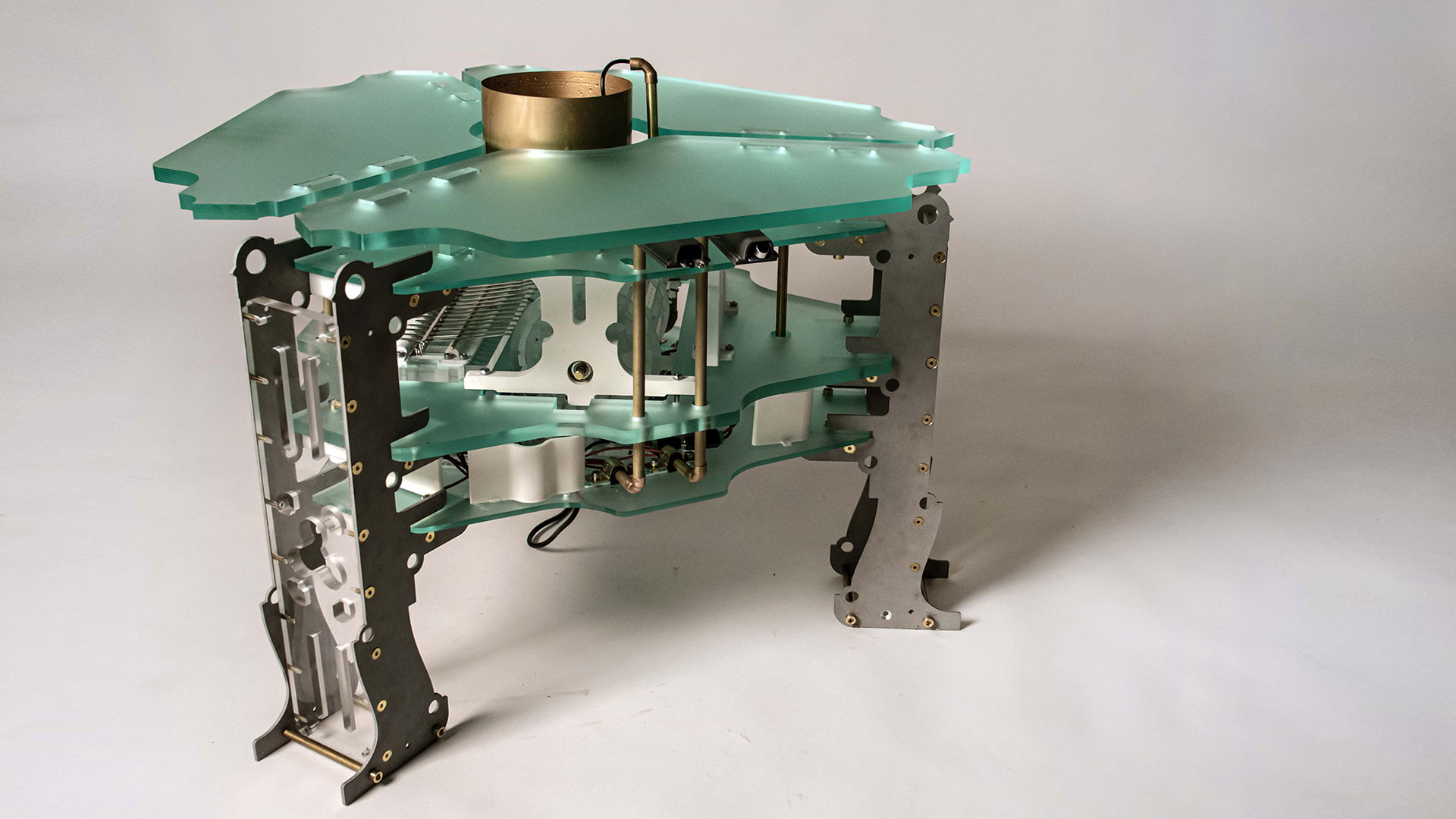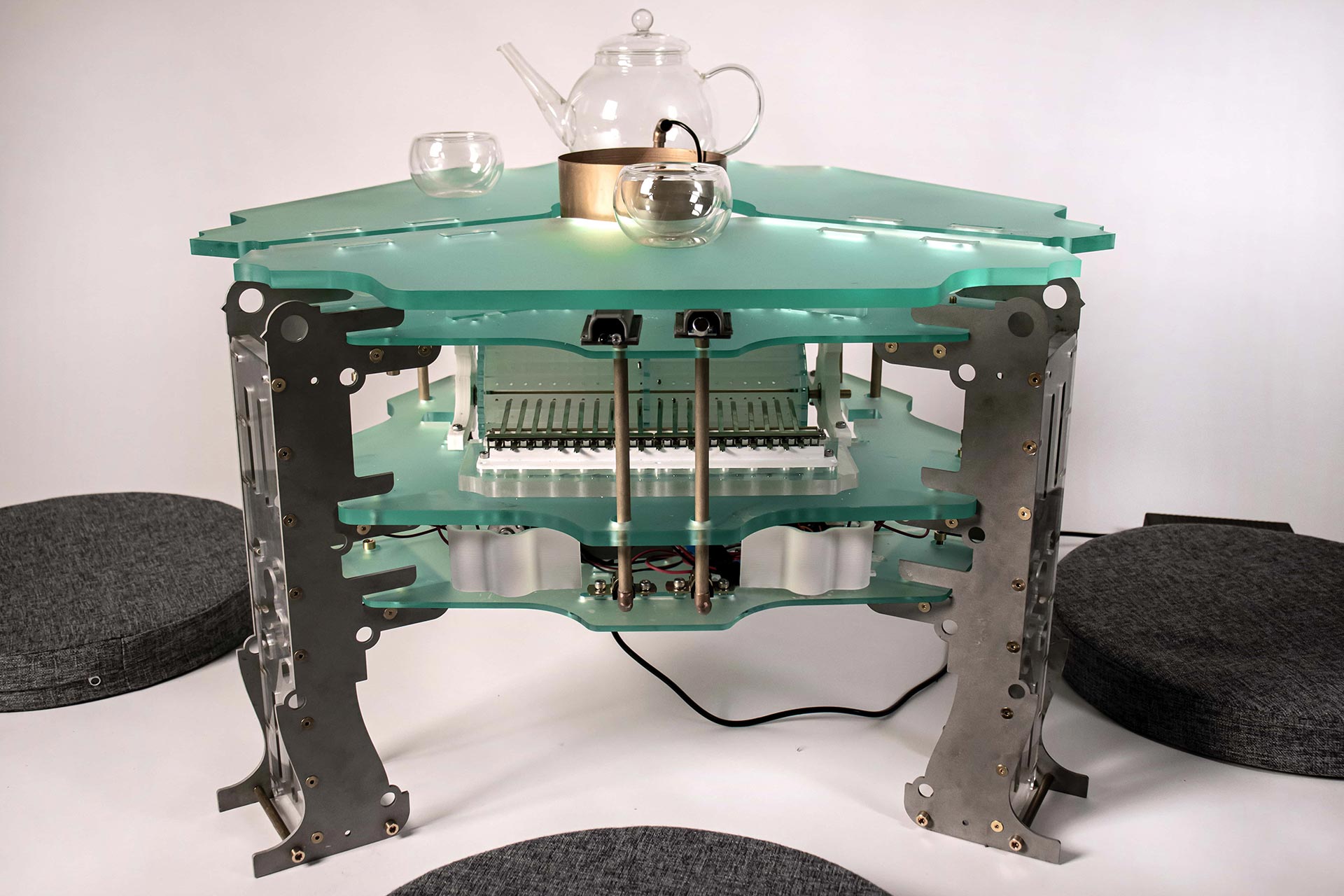“Never miss a good chance to shut up,” stated Will Rogers, a humorous social commentator. As whimsical as the quote may sound, humans are innately social creatures that often rely on linguistic and non-linguistic cues for interaction. Despite a high emphasis on spoken social interactions for a balanced and content life, eloquent silence plays an equally important role in expressing emotions. When caesura and ellipses are praised for being poetic tools of silence, is it justified to conduct 'forced' conversations in the real world where silence predominates? Can a coffee table dictate the awkward pauses in your social interactions? The 'SilenceTop' low table by Korean Interdisciplinary designer Reina Suyeon Mun, as an interactive microarchitectural item, confronts ‘silence’ in difficult contexts. STIR investigates the hotly contested table design of the SilenceTop, which plucks semitones on a kalimba to kill silence while outlining the pros and cons of a technology-driven world...
The musical rendition of a Korean low table
The Korean low table compliments its transdisciplinary origin as a microarchitectural product. The design is such that it reframes the domestic landscape and constructs a new mode of interaction by stymieing silence. Reina Suyeon Mun progressively checked many boxes of technical and behavioural concepts such as proxemics, sensor technology, conditional interactivity and social behaviour for creating the table.
Contrary to the conventional Korean preference for wooden materials, the design offers the look of laborious brutalism featuring an exposed plexiglass and aluminium structure, motor and brass fittings, and a canister that produces mist alongside a technique-driven kalimba as a gift of gab! Despite having an exposed outlook and heavy elaborate machinery out in the open, the table offers enough space to seat up to three people at a time. Notably, the design deviates from the usual well-finished interior furniture design and elevates the aesthetics of a contemporary coffee table to appear mechanical but also futuristic.
Kalimba kills the sound of silence
The design of the low table stems from the concept of killing silence with music by creating a soothing atmosphere, sure to calm the nerves down. However, one must note that the integration of music in a furniture’s design has been a concept much beloved by industrial designers. From a Ping Pong table that turns the game into a jamming session (Ping-Pong FM) to a dining table whose subtle wooden top shapeshifts as a Bluetooth speaker (Sound table by a Japenese Brand Kamaraq), harmony has invariably existed in the world of design. However, Mun, with an understanding of the therapeutic semitones of a kalimba, introduced it as an object of intervention in the SilenceTop in such a way that every time a conversation dies, the Kalimba automatically starts plucking subtle semitones. The only way to stop the music is to start conversing.
Subjective proxemics and the ease of conversation
Furthermore, as an intimate product design, the low table thrives on the principle of social interaction. The feeling and reading of silence, however, is an abstraction of many contexts, characters, and conversations. So while a coffee date with a close group of friends seems fit for a small table, is it suitable for a more formal interaction? With proxemics supporting the design, the Korean designer suggestively addresses the question. Mun designed the SilenceTop table with a coherent distance of 75 centimetres that according to a theory by renowned psychologist Edward Hall is not too close for a less developed relationship and not too far for an intimate one.

The four phases of a three-faced table
Even with the divisive distance and dimensions of the table, investigating the subject of silence around a conventional object remains delicate. The Korean designer incorporates different modes in the near-robotic table that are activated as per the changing course of communication across it. The social mode is automatically activated when two or more people sit around the object. Just as silence prevails for a slightly elongated time, the table intervenes by plucking low-pitch semitones on the kalimba. While the tones may appear as annoying to some, the only way to stop the music is to restart the conversation. With each repetition of social silence in one sitting, the frequency and agility of the semitones plucked increases. Catering to the second personality of the SilenceTop, when there is only one person around or no one in the same space, the lone mode is activated. In this case, SilenceTop regards silence as a requirement to last and cherish. Furthermore, when in lone mode, the device emits mists that penetrate the space over time, providing an ambient and calm atmosphere.
A boon or bane for the socially anxious?
As an extremely hopeful and minimally invasive object, the table can shift one’s focus on constructive means of socialisation. However, this can result in conditional interactivity for those who are socially anxious. Perhaps the silence is being cherished as a language of love, or the quietude permeating the ambience is deliberate, and the kalimba interfering with this harmless stillness in circumstances such as these makes the SilenceTop form a hindrance. The world has been witness to design advancements that are not just aesthetically pleasing but also highly innovative and functional. Despite how much we appreciate these developments, there is still room for debate on the necessity of technology-driven designs.
The SilenceTop table is a pixel in the design revolution picture that continues to impact the global design scene. It is not just creative but also highly innovative in nature, complimenting the ever-developing, high-tech sphere of design that South Korea continues to surprise the world with.






 Sign in with email
Sign in with email
















What do you think?